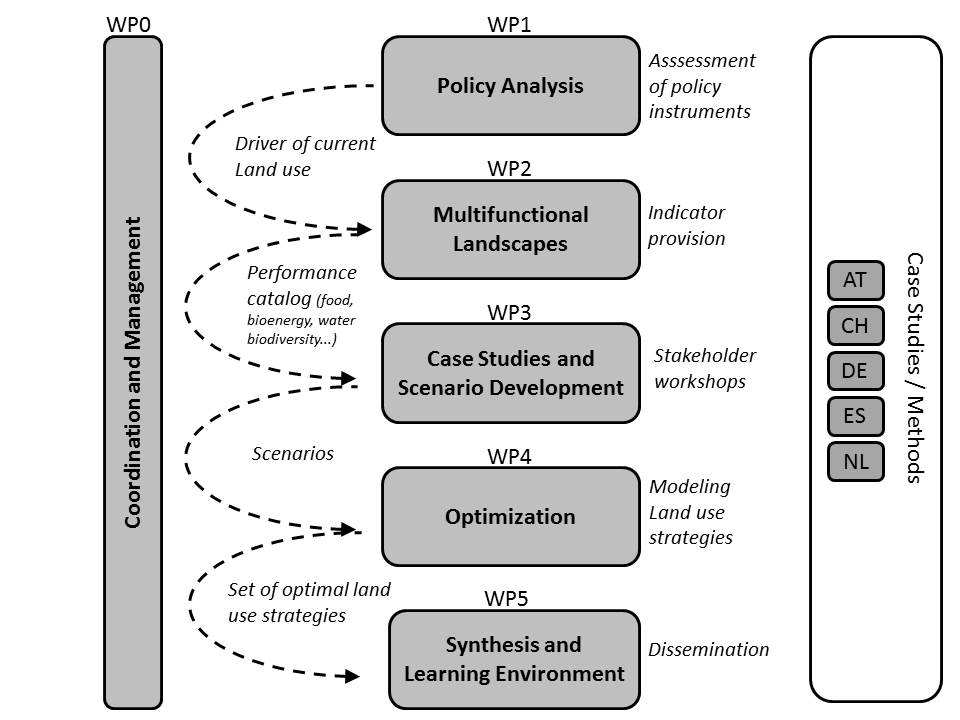Structure of the project
TALE is organized in five successive work packages (WP) which are organized in a way that they jointly deal with the five case study areas. WP 0 will ensure coordination and management of TALE. WP 1 analyses the policy framework impacting land use decisions regarding agricultural use, biodiversity conservation and ESS supply in a set of contrasting case study areas across Europe. It aims at identifying which implemented policy instruments are the major drivers for the current land use pattern and land use intensity in the case study areas as well as the synergies and conflicts arising from the implementation of different policies.
WP 2 characterises the environmental settings in the case study areas, identifies and quantifies the status of biodiversity conservation and ESS provision by developing and applying different biophysical, bio-economic and statistical models using maps, remote sensing and statistical data. WP 3 involves relevant stakeholder groups within the different case study areas and analyses their expectations and perceptions on policies as well as biodiversity and ESS objectives. This is the base for the development of scale- and case-study-specific representative land use scenarios.
Results from WP 2 and WP 3 are the basis for WP 4, which assesses land management strategies from the perspective of multifunctionality and evaluates land use driven trade-offs between biodiversity, ESS and other environmental targets. WP 5 will facilitate the integration of results through the development of a learning environment that serves as a platform for integration and exchange between partners and stakeholders during the project period and will be made available to other scientists, students, practitioners and policy makers in the last year of the project to provide tools and approaches, as well as a summary of project findings, to the different stakeholder groups addressed.


